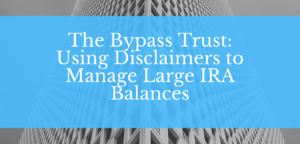Simplified per-diem rates boosted for post-September 30 business travel
Simplified per-diem rates boosted for post-September 30 business travel
Simplified per-diem rates boosted for post-September 30 business travel
Rev Proc 2006-41, 2006-43 IRB
Many companies use per-diem rates to reimburse their employees for business travel expenses rather than requiring employees to submit receipts for their expenditure. The IRS recently increased the simplified per-diem rate (high-low per-diem rate) for post September 30 business travel expenses. Employers may begin using the new rates immediately or wait until January 1, 2007 to implement them.
Per-Diem Reimbursement Method:
Regular actual per-diem method:
An employer may pay a per-diem amount to an employee for business-travel expense reimbursement. If the rate paid doesn’t exceed IRS-approved maximums, and employee provides simplified substantiation (time, place and business purpose), the reimbursement is treated as made under an accountable plan, which is not subject to income or payroll tax withholding.
IRS-approved per-diem maximum is the GSA (General Services Administration) per-diem rate paid by the federal government to its workers on travel status. It usually contains two components: one for lodging expense and the other for meals and incidental expenses (M&IE) such as laundry and pressing of clothing, tips for services, mailing cost, etc. These rates effective October 1, 2006 for federal are available on the website at http://www.gsa.gov.
High-low per-diem method:
As an alternative, an employer may use a simplified high-low per-diem method, under which there is one uniform per-diem rate for all high-cost areas within CONUS (Continental U.S.) and another rate for all other areas within CONUS.
Compared to previous rate applying to travel on or after October 1, 2005, simplified high-low per-diem has been boosted for post September 30, 2006 business travel by $20 and $7 for high-cost areas and non-high-cost localities respectively. Specifically, the high-cost-area per-diem is $246, consisting of $188 for lodging and $58 for M&IE. That for all other localities is $148, consisting of $103 for lodging and $45 for M&IE.
High-Low Per-Diem Rate:
Rate effective October 1, 2006 Rate effective October 1, 2005
High-Cost Area Non-High-Cost Area High-Cost Area Non-High-Cost Area
Lodging rate ($) 188 103 168 96
M&IE rate ($) 58 45 58 45
Combined per-diem ($) 246 148 226 141
In the meantime, high-cost and non-high-cost localities are periodically updated by the IRS. This time, five localities – Santa Barbara, CA; South Lake Tahoe, CA; Fort Lauderdale, FL; Fort Walton Beach/DeFuniak Springs, FL; and Stuart, FL – are added to the list of high-cost areas, while a number are dropped from that list, such as Napa, CA; Bar Harbor, ME; and Conway, NH. Besides, modifications are made for the date of seasonal-attraction localities to qualify as high-cost area, and the definition of certain localities.
What’s more, transition rules are worth noticing here. On the one hand, a taxpayer using actual per-diem method for the first nine months of 2006 cannot use the high-low per-diem method until January 1, 2007. On the other hand, a taxpayer, using high-low per-diem method for the first nine months of 2006, must continue using such method. However, in terms of per-diem rate, he/she may have two choices: (i) he/she may immediately use new per-diem rate effective October 1, 2006, (ii) he/she may continue using old per-diem rate for the rest of 2006 and begin to use new rate from January 1, 2007.
Transition Rule for Per-Diem Application:
Per-Diem Method Per-Diem Rate
Choice I Choice II
Actual Per-Diem
Must use actual per-diem method for the rest of 2006
Immediately use GSA rates effective October 1, 2006
Use old per-diem rates for the rest of 2006, if those rates are used for the last three months of 2006
High-Low Per-Diem
Must use high-low per-diem method for the rest of 2006
Immediately use new per-diem rates effective October 1, 2006
Use old per-diem rates for the rest of 2006
Other optional methods for per-diem:
(I) M&IE-only per-diem: Under the following circumstances, an employee may receive a per-diem reimbursement only for his/her M&IE during the business trip:
(i) An employer reimburses actual lodging costs;
(ii) An employer provides lodging in kind;
(iii) An employer pays the lodging directly;
(iv) An employer reasonably believes the worker will not incur lodging expenses (e.g., live in the house of relatives); or
(v) An employer bases his calculation on a method similar to that used for wages like hour worked, miles traveled.
If simplified substantiation is supplied, rate doesn’t exceed federal M&IE rate, and one of circumstances listed above happens, the MI&E paid is deemed as paid under an accountable plan.
(II) Incidental-expense-only deduction: For employees who don’t pay or incur meals expense for a calendar day (or partial day) in away-from-home travel, optional per-diem rate for “incidental expenses only” is set as $3 per day.
(III) Transportation industry per-diem: Taxpayers in the transportation industry paying a per-diem only for M&IE may have a special tax treatment. The IRS recognizes the unusual demands on employees and owners in transportation industry, and offers them some liberal deduction at tax time. Generally, a special $52 per-diem for M&IE applies for travel within the CONUS, while $58 per-diem for travel elsewhere.
Accountable Plan:
Just now, “accountable plan” has been mentioned again and again. Sound familiar? It is an important factor for a taxpayer to properly account for employee business expenses on tax return, since not all employee business expenses are deductible for AGI (Adjusted Gross Income) as trade or business expenses.
In general, the IRS restricts the deduction for AGI to those situations in which employees are reimbursed for their expenses under an accountable plan, which requires employees make an adequate accounting of their expenses with their employer (e.g., keeping records invoice, paid bill, receipt, etc.) and return excess reimbursement to the employer. Regarding tax treatment, the distinction between accountable and nonaccountabe plan lies in two areas: (i) Are the reimbursed expenses included miscellaneous itemized deductions, subject to limitation of 2% of AGI? (ii) Who (employer or employee) is subject to 50% limitation on meals on the business travel? Specifically, employees who receive reimbursements from a nonaccountable plan may deduct their expenses only as miscellaneous itemized deductions. Besides, the deduction taken for meals costs is subject to the 50% limitation on meals before applying the overall 2% of AGI limitation.
Tax Treatment of Employee’s Meal Expense on Different Reimbursement Plan:
Employer’s tax deduction Employee’s tax deduction
Accountable plan
Employer gets deduction for expense in corporate tax return, but the expense is subject to the 50% limitation on meals.
No 50% rule for meals applies. That is, all meals expense reimbursed is deductible, but such expenses should be includable in employee’s gross income.
Nonaccountable plan
Full of meals expense reimbursed to employee is deductible as reasonable business or trade expense.
Not only does 50% limitation on meals apply, but also all reimbursed meal expense is considered miscellaneous itemized deduction, subject to 2% of AGI limitation.
In this regard, in a high-cost area, the employer with an accountable plan takes a per-diem deduction of $217 ($188+$29), while the employer’s deduction for non-high-cost-area per-diem only amounts to $125.50 ($103+$22.5). However, no 50% limitation applies to the incidental-expense-only per-diem. With special per-diem rule applied to transportation industry, the employer may deduct 75% of the per-diem meals accordingly, and from 2008 on, the percentage will increase to 80%.
Self-employed Individuals:
Self-employed individuals may not choose allowable federal per-diem rate above mentioned, however, both M&IE-only per-diem and incidental-expense-only per diem work for them.
—————————————————————————————————————————————————————————————————————
We hope you found this article about “Simplified per-diem rates boosted for post-September 30 business travel” helpful. If you have questions or need expert tax or family office advice that’s refreshingly objective (we never sell investments), please contact us or visit our Family office page or our website at www.GROCO.com. Unfortunately, we no longer give advice to other tax professionals gratis.
To receive our free newsletter, contact us here.
Subscribe our YouTube Channel for more updates.

Alan Olsen, is the Host of the American Dreams Show and the Managing Partner of GROCO.com. GROCO is a premier family office and tax advisory firm located in the San Francisco Bay area serving clients all over the world.
Alan L. Olsen, CPA, Wikipedia Bio

GROCO.com is a proud sponsor of The American Dreams Show.

The American Dreams show was the brainchild of Alan Olsen, CPA, MBA. It was originally created to fill a specific need; often inexperienced entrepreneurs lacked basic information about raising capital and how to successfully start a business.
Alan sincerely wanted to respond to the many requests from aspiring entrepreneurs asking for the information and introductions they needed. But he had to find a way to help in which his venture capital clients and friends would not mind.
The American Dreams show became the solution, first as a radio show and now with YouTube videos as well. Always respectful of interview guest’s time, he’s able to give access to individuals information and inspiration previously inaccessible to the first-time entrepreneurs who need it most.
They can listen to venture capitalists and successful business people explain first-hand, how they got to where they are, how to start a company, how to overcome challenges, how they see the future evolving, opportunities, work-life balance and so much more..
American Dreams discusses many topics from some of the world’s most successful individuals about their secrets to life’s success. Topics from guest have included:
Creating purpose in life / Building a foundation for their life / Solving problems / Finding fulfillment through philanthropy and service / Becoming self-reliant / Enhancing effective leadership / Balancing family and work…

MyPaths.com (Also sponsored by GROCO) provides free access to content and world-class entrepreneurs, influencers and thought leaders’ personal success stories. To help you find your path in life to true, sustainable success & happiness. It’s mission statement:
In an increasingly complex and difficult world, we hope to help you find your personal path in life and build a strong foundation by learning how others found success and happiness. True and sustainable success and happiness are different for each one of us but possible, often despite significant challenges.
Our mission at MyPaths.com is to provide resources and firsthand accounts of how others found their paths in life, so you can do the same.
Personal Finance 101
Personal Finance 101 The subject of personal finance is very broad, but as a beginning, I would like to discuss what I consider the foundations of personal finance: Security, Stability, Growth and Protection & Management. Security Security to me means that I am prepared for the “hit by a bus” scenario. I have life insurance…
Saving for Retirement: 5 Steps to Building Significant Wealth
Saving for Retirement: 5 Steps to Building Significant Wealth Are you saving enough money for retirement? Do you know how much money you need to accumulate in order to retire? Are you concerned about how you should be saving for retirement? The simplicity of these questions can lead many people to believe that there is…
The Bypass Trust: Using Disclaimers to Manage Large IRA Balances
The Bypass IRA Trust: Using Disclaimers to Manage Large IRA Balances By Mary Kay Foss California CPA, December 2001Trying to fund a bypass trust can be problematic if clients only have a residence and a large retirement plan as their major assets. On the surface, a residence isn’t a good asset for a bypass trust…
Tax Break for College Tuition Payments
Tax Break for College Tuition Payments If you are writing a college tuition check, there may be a hidden tax break that will allow you to deduct a part of your college tuition payment. In order to do this, you must utilize a ‘Section 529’ College Savings Plan in one of the 26 states…



